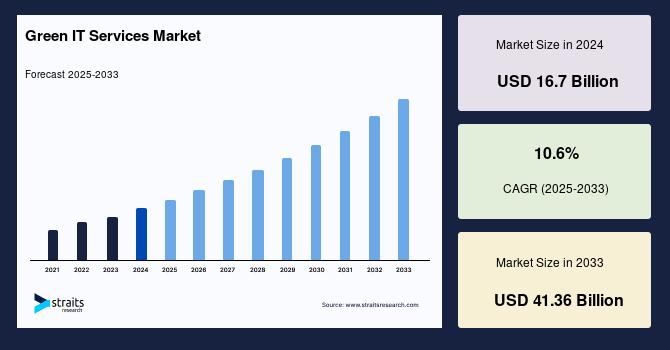Tiny copper clusters could lead to faster, energy-saving electronics – ASU News

Advancements in Spintronic Materials and Sustainable Development
Research Overview and Key Findings
A recent study conducted by researchers at Arizona State University has yielded significant progress in the field of spintronics. This emerging technology utilizes the intrinsic spin of electrons, in addition to their charge, to create more efficient information storage and processing systems. The research focuses on the precise control of electron spin properties within nanoscale clusters of copper and oxygen atoms.
Investigators employed powerful laser pulses to analyze the behavior of neutral copper oxide clusters, observing their relaxation states at a sub-picosecond timescale. The study revealed that the magnetic and electronic properties of these clusters can be precisely tuned.
- By adjusting the atomic ratio of copper to oxygen, researchers can control the duration of the material’s excited states.
- The study identified surprisingly large magnetic moments in these clusters, a property not present in the bulk form of copper oxide.
- This tunable magnetism is directly linked to the unique local structure of the nanoscale clusters, paving the way for their application in advanced electronics.
Implications for Sustainable Development Goals (SDGs)
The findings present substantial opportunities for advancing several United Nations Sustainable Development Goals (SDGs) through technological innovation and sustainable material science.
- SDG 9: Industry, Innovation, and Infrastructure: This research represents a fundamental scientific innovation that could establish the foundation for a new generation of technological infrastructure. The development of spintronics using abundant and cost-effective materials like copper oxide supports sustainable industrialization by moving away from reliance on rarer elements.
- SDG 7: Affordable and Clean Energy: The inherent efficiency of spintronic devices promises a significant reduction in the energy consumption of computers, smartphones, and data centers. Furthermore, the study notes that copper oxides are already being investigated for water-splitting applications, a key process for producing clean hydrogen energy, directly contributing to clean energy goals.
- SDG 12: Responsible Consumption and Production: By enabling smaller, more powerful, and energy-efficient electronics, this research supports more sustainable consumption patterns. The increased efficiency reduces the environmental footprint of electronic devices during their use phase. The use of an abundant material like copper promotes responsible production cycles and could help mitigate the generation of electronic waste.
Future Applications and Broader Impact
The ability to manipulate the magnetic properties of copper oxide at the molecular level unlocks pathways for transformative technologies. The material’s low cost and abundance enhance its viability for widespread adoption.
- High-Efficiency Electronics: The primary application is in faster, more powerful computers and smartphones with advanced memory storage capabilities.
- Eco-Friendly Technology: The research provides a route to developing more environmentally sustainable electronics through enhanced energy efficiency.
- Quantum Computing: Understanding and controlling quantum properties like electron spin at the nanoscale is critical for the advancement of quantum computing.
This study underscores how materials science at the atomic scale is integral to developing innovative solutions that address global challenges in energy, industry, and sustainable consumption.
Analysis of Sustainable Development Goals (SDGs) in the Article
-
Which SDGs are addressed or connected to the issues highlighted in the article?
The article on spintronic technologies connects to several Sustainable Development Goals by focusing on scientific innovation, energy efficiency, and the potential for clean energy applications.
- SDG 9: Industry, Innovation, and Infrastructure: The core of the article is about a scientific breakthrough (“new study from researchers”) that fosters innovation in electronics. This research paves the way for new “spintronic” technologies, which represents a significant advancement in material science and high-tech applications, directly aligning with the goal of promoting innovation.
- SDG 7: Affordable and Clean Energy: The article explicitly mentions that the materials being studied, copper oxides, are already being explored for “water splitting for clean-energy applications.” This links the fundamental research to the development of technologies that can contribute to a sustainable energy future.
- SDG 12: Responsible Consumption and Production: The new technology aims to process information “more efficiently.” More efficient electronics and data storage would lead to lower energy consumption, promoting sustainable patterns. The use of “cheap and abundant” materials like copper also relates to the sustainable management of natural resources.
-
What specific targets under those SDGs can be identified based on the article’s content?
Based on the connections above, the following specific targets can be identified:
- Target 9.5: Enhance scientific research, upgrade the technological capabilities of industrial sectors. The entire article is a testament to this target. It describes advanced scientific research (“powerful laser pulses to excite neutral copper oxide clusters”) at a university that aims to develop new technologies (“spintronics”) and “advance material science.”
- Target 7.2: By 2030, increase substantially the share of renewable energy in the global energy mix. The article supports this target by highlighting a potential application of the research material (copper oxides) in “water splitting for clean-energy applications.” This process is a key method for producing green hydrogen, a form of renewable energy.
- Target 12.2: By 2030, achieve the sustainable management and efficient use of natural resources. The research aims to create technologies that are more efficient. Spintronics is described as a way to “store and process information more efficiently,” which implies a more efficient use of energy. Furthermore, the research focuses on “cheap and abundant” copper, aligning with the efficient use of natural material resources.
-
Are there any indicators mentioned or implied in the article that can be used to measure progress towards the identified targets?
The article implies several indicators that could measure progress, even if it does not provide quantitative data.
- For Target 9.5: The existence of the study itself, published as a “cover story in The Journal of Physical Chemistry Letters,” serves as an indicator of investment and output in scientific research and development (related to Indicator 9.5.1: Research and development expenditure). The goal to “advance material science” and develop “high-tech applications” is a qualitative measure of upgrading technological capabilities.
- For Target 7.2: The article implies an indicator related to technological development for clean energy. The mention of “water splitting for clean-energy applications” points to progress in creating new, viable technologies that can increase the share of renewable energy. The success of such research is a precursor to its implementation.
- For Target 12.2: An implied indicator is the efficiency of the new technology. The article states that spintronics allows information to flow “faster and more efficiently.” Measuring the reduction in energy consumption per unit of processed or stored data in spintronic devices compared to traditional electronics would be a direct indicator of more efficient resource use.
-
Create a table with three columns titled ‘SDGs, Targets and Indicators” to present the findings from analyzing the article.
SDGs Targets Indicators (as identified or implied in the article) SDG 9: Industry, Innovation, and Infrastructure 9.5: Enhance scientific research, upgrade the technological capabilities of industrial sectors. Investment in and publication of scientific research aimed at developing new technologies (e.g., the spintronics study at ASU). SDG 7: Affordable and Clean Energy 7.2: Increase substantially the share of renewable energy in the global energy mix. Development of new materials and technologies for clean energy production (e.g., using copper oxides for “water splitting”). SDG 12: Responsible Consumption and Production 12.2: Achieve the sustainable management and efficient use of natural resources. Increased efficiency of electronic devices (processing information “more efficiently”) and the use of “cheap and abundant” materials in high-tech applications.
Source: news.asu.edu

What is Your Reaction?
 Like
0
Like
0
 Dislike
0
Dislike
0
 Love
0
Love
0
 Funny
0
Funny
0
 Angry
0
Angry
0
 Sad
0
Sad
0
 Wow
0
Wow
0



























;Resize=805#)


















































